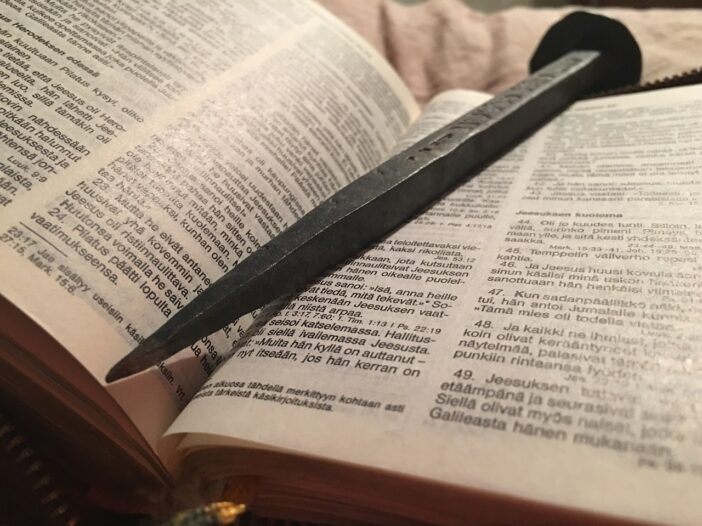
The Rosetta Stone is considered one of the seven game-changing archaeological discoveries of all time. Its inscription is engraved in Greek, Demotic (everyday Egyptian), and hieroglyphics (Egypt’s sacred script for tombs and monuments).
Engraving implies permanence. Figures, letters, or designs are cut into stone, clay, metal, wood … any object strong enough to sustain the pressure of engraving’s process.
Engraving leaves a deep impression. It stands the test of time.
In Isaiah 49:16, God said, “Behold, I have engraved you on the palms of my hands.” That Hebrew word means “to cut in, or inscribe.”
I can’t fathom how God engraves us on His palms. But it tangibly shows us that He cannot forget us (Isaiah 49:15). What a wonderful visual!
God wants to impress upon us another type of engraving, too.
Jesus’ love for us was engraved on His body when Roman soldiers drove eight-inch metal spikes through His hands. Jesus withstood the pressure and pain of that engraving as He bled sacrificially for us.
Above Him hung a written sign. Writing is done on flimsy substrates: paper, papyrus, parchment. Like most writing, the sign didn’t stand the test of time. But the engraving did.
Jesus kept the cruel engravings of nails in His hands and a spear in His side to show us how much He loves us.
Thomas needed more proof than his colleagues’ word that Jesus was alive (John 20:24-29). He didn’t see his risen Lord for eight days. (Talk about the longest week ever.) So Jesus didn’t simply show Thomas His wounds. He invited Thomas to poke through them. Touch what the nails and spear had engraved.
Can you imagine how that transformed Thomas? History records he traveled all the way to India to spread the Gospel. (Sidebar: In 1498, Vasco da Gama was surprised to find Christian communities thriving in southern India. Even more surprising was the locals’ certainty that St. Thomas had established the church.)
Now let’s look at what John didn’t say about Thomas. Why didn’t Jesus invite Thomas to examine His feet, too? Could Thomas have seen those wounds without Jesus’ prompting? Did John omit that detail for personal or cultural reasons?
As far as I can tell, Bible commentaries are silent on that topic.
I have a radical thought on this—and two reasons for it.
Radical thought: Jesus didn’t keep the nail prints in His feet.
I believe Jesus’ body purposely bears signs of His death as well as His conquest of death. The whip hurt Jesus, but the nails killed Him. The wounds Jesus kept embody His death. The rest of His body, unblemished after the Resurrection, embodies God’s power to overcome death.
Jesus didn’t keep the wound in His feet because He walked out of the tomb.
Walking out of the tomb to newness of life that had conquered death was Jesus’ first step in declaring, “I am making everything new” (Revelation 21:5, NIV).
The Last Supper also figures into my reasoning. Jesus stooped to the position of a Gentile slave to do the vile task of foot washing. He sponged filth from the feet of men who would soon abandon, deny, and betray Him. Among the many things we can cull from that scene is this: what was filthy and despised became clean and pure through Jesus’ actions.
That’s the second reason why I think Jesus’ feet no longer bear any nail marks. His unblemished feet remind us how He washed everyone’s sins away like He symbolically did at the Last Supper. (It also absolved Exodus 30:20-21.)
Whether Jesus’ feet remain pierced or not, the point is His love for us is still engraved on His body. He invites us to engrave that truth on our hearts. What better time than now at Easter?
One day we’ll touch our precious Lord’s hands. We’ll finally know the fullness of His sacrifice and love. And fall down in grateful worship.





Leave a Comment